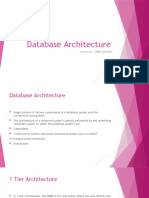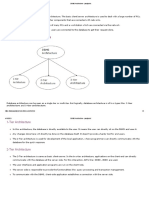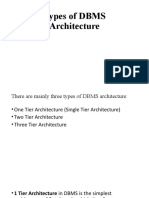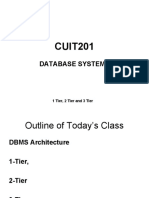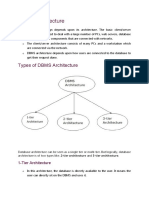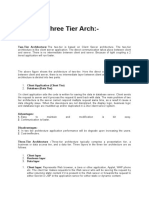DATABASES ARCHITECTURE
Database architecture can be seen as a single tier or multi-tier. But logically, database
architecture is of two types like: 2-tier architecture and 3-tier architecture.
1-Tier Architecture
o In this architecture, the database is directly available to the user. It means the user can
directly sit on the DBMS and uses it.
o Any changes done here will directly be done on the database itself. It doesn't provide a
handy tool for end users.
o The 1-Tier architecture is used for development of the local application, where
programmers can directly communicate with the database for the quick response.
2-Tier Architecture
� o The 2-Tier architecture is same as basic client-server. In the two-tier architecture,
applications on the client end can directly communicate with the database at the server
side. For this interaction, API's like: ODBC, JDBC are used.
o The user interfaces and application programs are run on the client-side.
o The server side is responsible to provide the functionalities like: query processing and
transaction management.
o To communicate with the DBMS, client-side application establishes a connection with
the server side.
Fig: 2-tier Architecture
3-Tier Architecture
o The 3-Tier architecture contains another layer between the client and server. In this
architecture, client can't directly communicate with the server.
o The application on the client-end interacts with an application server which further
communicates with the database system.
� o End user has no idea about the existence of the database beyond the application server.
The database also has no idea about any other user beyond the application.
o The 3-Tier architecture is used in case of large web application.
Fig: 3-tier Architecture















